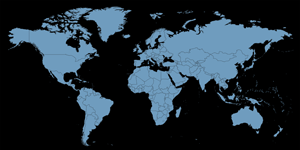Global Issues


Philippines
• Source country and, to a much lesser extent, a destination and transit country for men, women, and children who subjected to sex trafficking.
• Women subjected to sex trafficking in countries such as Malaysia, Singapore, Hong Kong, South Korea, and Japan and in various Middle Eastern countries.
• Internal trafficking of men, women, and children remains a significant problem in the Philippines.
• Women and children trafficked within the country for exploitation in the commercial sex industry.
• Hundreds of victims subjected to forced prostitution each day in well-known and highly visible business establishments that cater to both domestic and foreign demand for commercial sex acts.
• Violence against women, abuse of children, child sexual exploitation, trafficking in persons common.
• 14.4% of women in the Philippines report intimate partner physical violence in their lifetime.
• 8% of women report sexual intimate partner violence in their lifetime.
• 20.1% of women report intimate partner and/or non-partner physical violence in their lifetime.
• 8.7% of women report intimate partner and/or non-partner sexual violence in their lifetime.
• 4.1% report forced first sex.
• 3.6% report abuse during pregnancy.
Advocacy:
• Asia Pacific Network of Sex Workers is a coalition of sex worker groups and projects working on issues of HIV and human rights for female, male and transgender sex workers across Asia and the Pacific.
• Darlene Pajarito works with law enforcement, social workers, specialized agents, and government entities on human trafficking issues, the Philippines’ anti-trafficking law, and methods to prosecute traffickers effectively.
• Visayan Forum has rescued and provided assistance to more than 32,000 victims and potential victims of trafficking, and has helped file 66 trafficking cases on behalf of 166 victims. Flores-Oebanda is also the recipient of Anti-Slavery International’s Anti- Slavery Award in 2005.
Sources: UN Women Violence against Women Prevalence Data: Surveys by Country 2011; U.S. Department of State Trafficking in Persons Report 2011; U.S. Department of State Trafficking in Persons Report 2008; U.S. Department of State 2010 Human Rights Report
